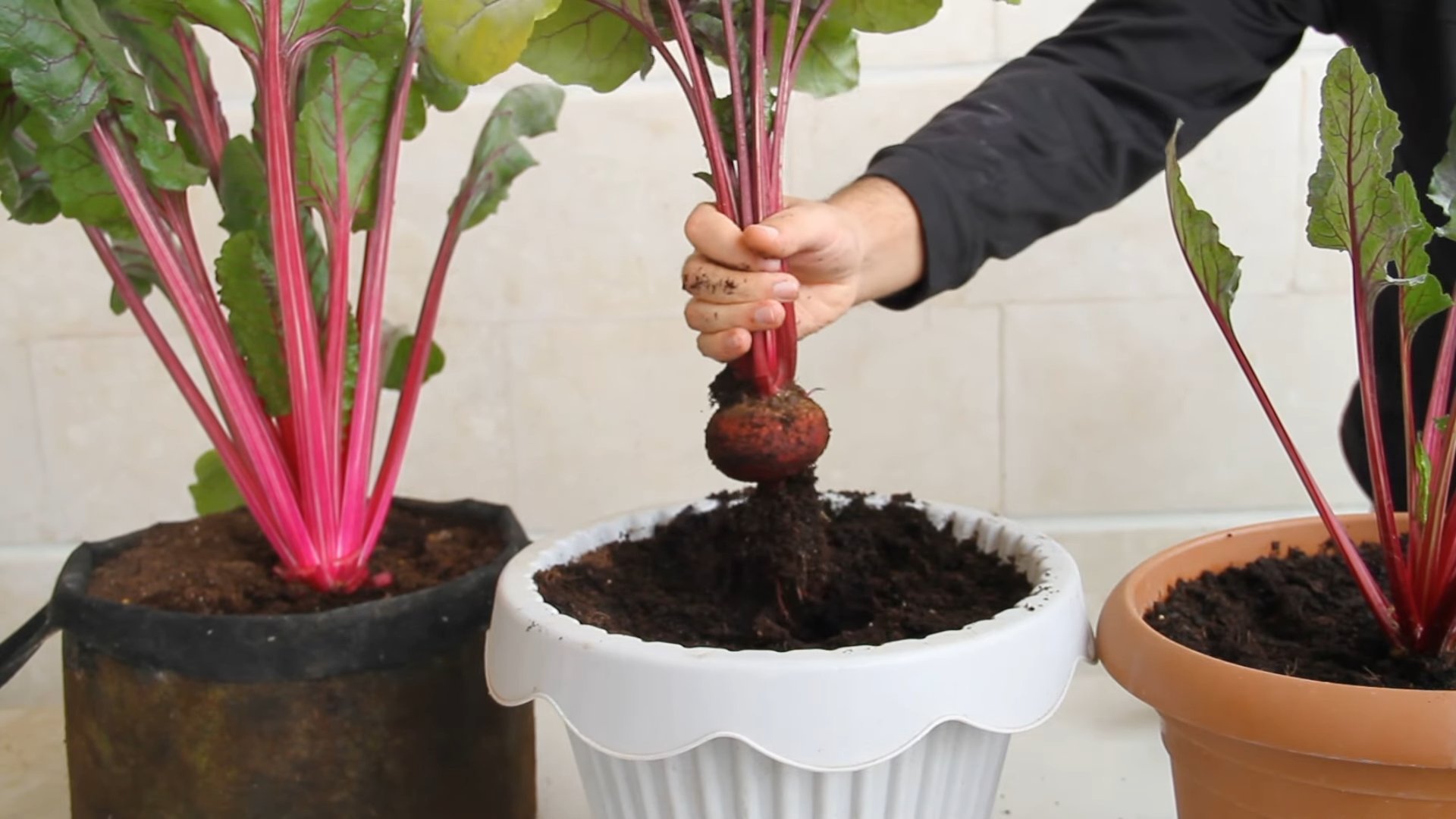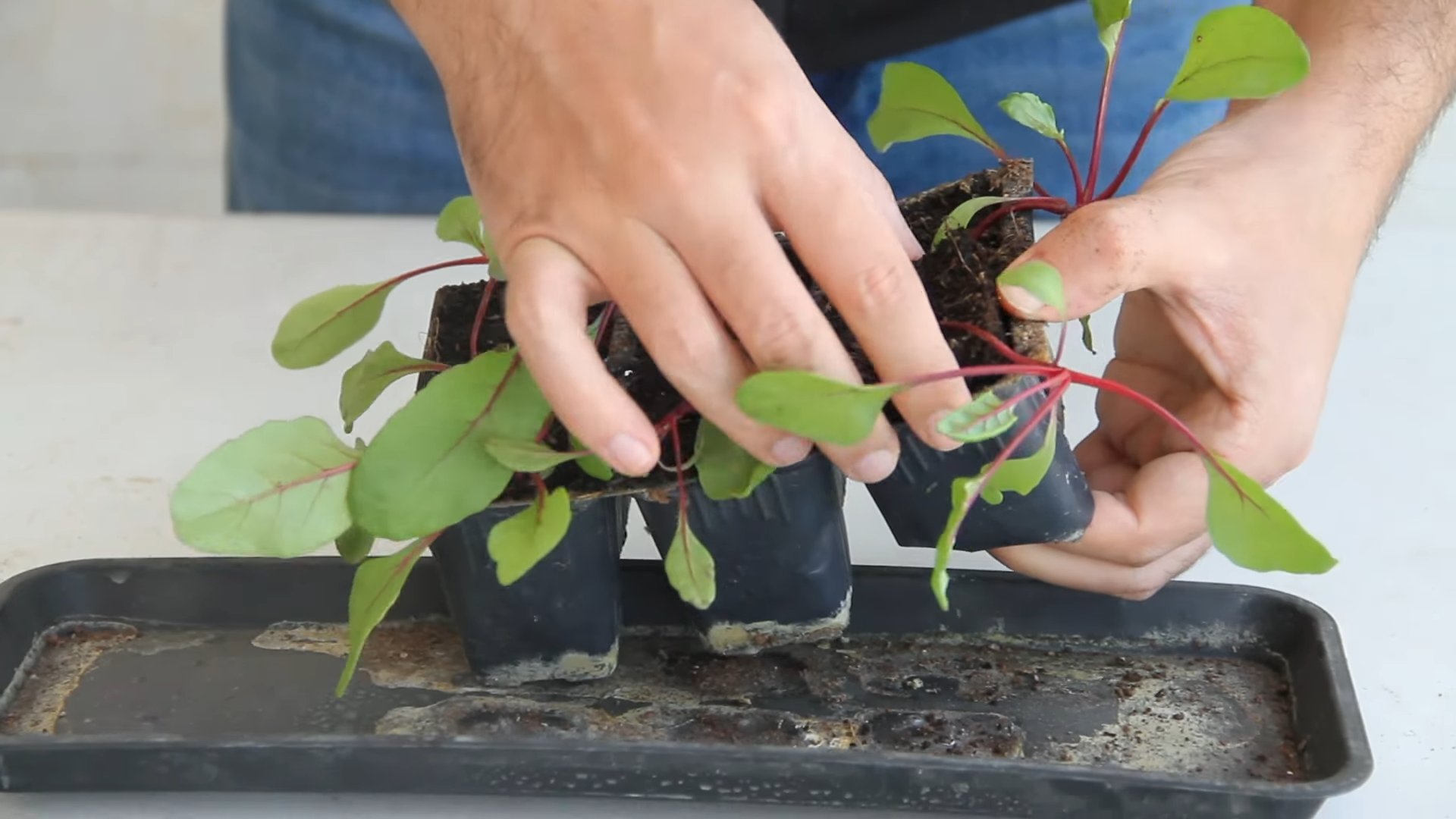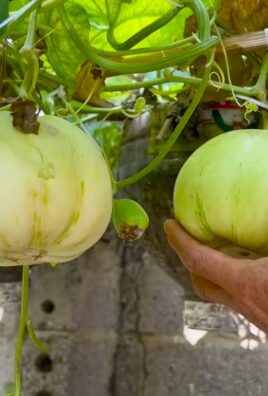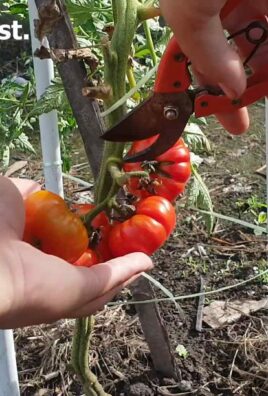Growing beets in containers might sound intimidating, but trust me, it’s easier than you think! Have you ever dreamt of harvesting your own vibrant, earthy beets right from your patio or balcony? Imagine the satisfaction of pulling up those ruby-red roots, knowing you nurtured them from tiny seeds to delicious, homegrown goodness. This isn’t just about gardening; it’s about connecting with nature, even in the smallest of spaces.
Beets have a rich history, dating back to ancient times when their leafy greens were prized more than their roots. Over centuries, they’ve become a staple in cuisines worldwide, from borscht in Eastern Europe to roasted salads in the Mediterranean. But you don’t need a sprawling farm to enjoy this versatile vegetable.
In today’s busy world, many of us lack the space or time for traditional gardens. That’s where container gardening comes in! Growing beets in containers allows you to enjoy fresh, organic produce without the commitment of a large plot. Plus, it’s a fantastic way to add a splash of color and life to your outdoor living area. I’m going to show you some simple DIY tricks and hacks that will have you harvesting your own beets in no time. Get ready to unleash your inner gardener and enjoy the delicious rewards!

Growing Beets in Containers: A Beginner’s Guide
Hey there, fellow gardening enthusiasts! I’m so excited to share my experience with growing beets in containers. It’s surprisingly easy, even if you don’t have a huge backyard. Beets are packed with nutrients, delicious roasted, pickled, or even eaten raw in salads, and their vibrant greens are edible too! So, let’s dive into how you can grow your own bountiful beet crop right on your patio or balcony.
Choosing the Right Container and Soil
First things first, you need to pick the perfect home for your beets. Here’s what I’ve learned:
* Container Size: Beets need room to grow downwards, so choose a container that’s at least 12 inches deep and 12 inches wide. A larger container is always better, especially if you plan on growing multiple beets together. I personally prefer using a container that’s at least 18 inches in diameter for a small cluster of beets.
* Material: Plastic, terracotta, or even fabric pots work well. Just make sure your container has drainage holes! Beets hate sitting in soggy soil.
* Drainage: Good drainage is crucial. If your container doesn’t have enough drainage holes, you can drill a few more.
* Soil: Beets thrive in loose, well-draining soil that’s rich in organic matter. Avoid heavy clay soil, as it can hinder root development. I highly recommend using a good quality potting mix specifically formulated for vegetables. You can also amend your potting mix with compost or well-rotted manure to boost its nutrient content.
Planting Your Beet Seeds
Now for the fun part – planting!
1. Prepare the Soil: Fill your container with your chosen potting mix, leaving about an inch or two of space at the top. Gently pat down the soil to remove any large air pockets.
2. Sow the Seeds: Beet seeds are actually clusters of seeds, so you’ll likely get multiple seedlings sprouting from each seed “ball.” Sow the seeds about 1 inch deep and 2-3 inches apart. If you’re planting in rows, space the rows about 4-6 inches apart.
3. Cover and Water: Lightly cover the seeds with soil and gently water the container until the soil is evenly moist. Avoid overwatering, as this can cause the seeds to rot.
4. Germination: Keep the soil consistently moist during germination. You should see seedlings emerge in about 5-10 days, depending on the temperature.
Thinning Your Beet Seedlings
This is a crucial step that many beginners overlook! Remember those seed clusters? You’ll need to thin out the seedlings to give each beet enough space to develop properly.
1. Wait for True Leaves: Once your seedlings have developed a few sets of “true leaves” (the leaves that look like miniature beet greens), it’s time to thin them.
2. Choose the Strongest: Select the strongest, healthiest-looking seedling in each cluster.
3. Thin Carefully: Gently snip off the weaker seedlings at the soil line using small scissors or pruning shears. Be careful not to disturb the roots of the remaining seedling.
4. Spacing: Aim for a final spacing of about 3-4 inches between each beet plant. This will give them enough room to grow to a decent size. Don’t throw away the thinned seedlings! You can eat them as microgreens in salads.
Caring for Your Beets
Consistent care is key to a successful beet harvest.
* Watering: Beets need consistent moisture, especially during hot weather. Water deeply whenever the top inch of soil feels dry to the touch. Avoid overhead watering, as this can promote fungal diseases.
* Fertilizing: Beets are heavy feeders, so they benefit from regular fertilization. I like to use a balanced liquid fertilizer diluted to half strength every 2-3 weeks. You can also side-dress your beets with compost or well-rotted manure.
* Sunlight: Beets need at least 6 hours of sunlight per day. Place your container in a sunny location where it will receive plenty of direct sunlight.
* Weeding: Keep your container free of weeds, as they can compete with your beets for nutrients and water. Gently hand-pull any weeds that appear.
* Pest Control: Beets are generally pest-resistant, but they can occasionally be bothered by aphids, flea beetles, or leaf miners. Inspect your plants regularly and take action if you notice any signs of infestation. You can usually control these pests with insecticidal soap or neem oil.
Harvesting Your Beets
The moment you’ve been waiting for!
1. Timing: Beets are typically ready to harvest about 50-70 days after planting, depending on the variety. You can harvest them when the roots are about 1-3 inches in diameter. I usually start harvesting when they are about the size of a golf ball.
2. Check the Shoulders: You can check the size of the beets by gently brushing away the soil around the “shoulders” of the roots.
3. Harvest Carefully: To harvest, gently loosen the soil around the beet and pull it straight up from the base of the greens. Be careful not to damage the roots.
4. Enjoy! Once harvested, you can enjoy your beets in a variety of ways. Roast them, boil them, pickle them, or add them to salads. Don’t forget to eat the greens too! They’re delicious sautéed or steamed.
Troubleshooting Common Problems
Even with the best care, you might encounter a few challenges along the way. Here are some common problems and how to address them:
* Poor Germination: If your beet seeds aren’t germinating, it could be due to several factors, such as old seeds, cold soil, or overwatering. Make sure you’re using fresh seeds and that the soil is warm enough. Avoid overwatering, as this can cause the seeds to rot.
* Slow Growth: Slow growth can be caused by insufficient sunlight, poor soil, or lack of nutrients. Make sure your beets are getting enough sunlight and that the soil is rich in organic matter. Fertilize regularly to provide them with the nutrients they need.
* Leggy Seedlings: Leggy seedlings are tall and spindly, with weak stems. This is usually caused by insufficient light. Move your container to a sunnier location or provide supplemental lighting.
* Bolting: Bolting is when beets prematurely flower and go to seed. This is usually caused by stress, such as heat, drought, or inconsistent watering. Try to keep your beets consistently watered and protect them from extreme temperatures.
* Leaf Spot: Leaf spot is a fungal disease that causes brown or black spots on the leaves. To prevent leaf spot, avoid overhead watering and provide good air circulation. If you notice leaf spot, remove the affected leaves and treat the plants with a fungicide.
Choosing Beet Varieties for Containers
Not all beet varieties are created equal when it comes to container gardening. Here are a few of my favorites:
* ‘Early Wonder’: This is a classic variety that’s known for its early maturity and sweet flavor. It’s a great choice for beginners.
* ‘Detroit Dark Red’: This is another popular variety that’s known for its deep red color and excellent flavor. It’s a good all-around choice for container gardening.
* ‘Golden’: If you’re looking for something a little different, try ‘Golden’ beets. They have a mild, sweet flavor and a beautiful golden color.
* ‘Chioggia’: This Italian heirloom variety is known for its beautiful red and white striped interior. It’s a great choice for adding visual interest to your garden and your plate.
* ‘Baby Beet’ Varieties: These are specifically bred to be harvested at a smaller size, making them ideal for containers.
Tips for a Bountiful Harvest
Here are a few extra tips to help you maximize your beet harvest:
* Succession Planting: Plant a new batch of beet seeds every 2-3 weeks to ensure a continuous harvest throughout the growing season.
* Companion Planting: Plant beets alongside other vegetables that can benefit them, such as onions, garlic, lettuce, and radishes.
* Mulching: Mulch around your beet plants with straw or wood chips to help retain moisture and suppress weeds.
* Rotate Your Crops: Avoid planting beets in the same container year after year, as this can deplete the soil of nutrients and increase the risk of disease.
Growing beets in containers is a rewarding experience that anyone can enjoy. With a little bit of planning and care, you can harvest a delicious and nutritious crop of beets right on your doorstep. Happy gardening!

Conclusion
So, there you have it! Growing beets in containers is not only achievable, but it’s also a remarkably rewarding experience. We’ve walked you through the process, from selecting the right container and soil to nurturing your beet plants to a bountiful harvest. But why should you bother with this DIY trick?
Simply put, container gardening opens up the world of fresh, homegrown beets to everyone, regardless of their living situation. Whether you have a sprawling backyard or a tiny balcony, you can enjoy the vibrant colors and earthy flavors of freshly grown beets. Imagine adding those sweet, tender beets to your salads, roasting them with herbs, or even pickling them for a tangy treat. The possibilities are endless!
Beyond the convenience, growing your own beets allows you to control the growing environment, ensuring that your plants receive the best possible care. You can choose organic soil, avoid harmful pesticides, and monitor the moisture levels to prevent common beet problems. This translates to healthier, tastier beets that are packed with nutrients.
But the benefits don’t stop there. Container gardening is also a fantastic way to connect with nature, relieve stress, and learn new skills. There’s something incredibly satisfying about nurturing a plant from seed to harvest, and the sense of accomplishment you’ll feel when you pull your first beet from the soil is truly unmatched.
Ready to take your beet growing to the next level? Consider experimenting with different beet varieties. ‘Detroit Dark Red’ is a classic choice, but you might also try ‘Golden’ beets for their mild flavor and vibrant color, or ‘Chioggia’ beets for their beautiful candy-striped interiors. You can also try companion planting. Marigolds can help deter pests, while chamomile can improve the overall health of your beet plants.
Another variation to explore is succession planting. By planting new beet seeds every few weeks, you can ensure a continuous harvest throughout the growing season. This is especially useful if you have a small container garden and want to maximize your yield.
We’ve covered the basics, but the real magic happens when you start experimenting and adapting the techniques to your own unique environment. Don’t be afraid to try new things, make mistakes, and learn from your experiences. That’s what gardening is all about!
So, what are you waiting for? Grab a container, some soil, and a packet of beet seeds, and get ready to embark on a beet-growing adventure. We’re confident that you’ll be amazed by the results.
And most importantly, we want to hear about your experience! Share your photos, tips, and stories with us in the comments below. Let’s create a community of container beet growers and inspire others to discover the joys of homegrown produce. Let us know what worked for you, what challenges you faced, and what delicious recipes you created with your homegrown beets. Your feedback will help us improve this guide and empower others to succeed in their own container gardening endeavors. Happy growing!
Frequently Asked Questions (FAQ)
What is the best container size for growing beets?
A container that is at least 8-12 inches deep and 6-8 inches wide is ideal for growing beets. This allows enough room for the roots to develop properly. If you’re planning to grow multiple beets in the same container, choose a larger container with a wider diameter. A good rule of thumb is to provide at least 3-4 inches of space between each beet plant. Remember, adequate space is crucial for healthy root development and a good harvest.
What type of soil is best for growing beets in containers?
Beets prefer well-draining, loose soil that is rich in organic matter. A good potting mix specifically formulated for vegetables is a great option. You can also create your own mix by combining equal parts of potting soil, compost, and perlite or vermiculite. Avoid using garden soil, as it can be too heavy and compact, hindering root growth. The ideal soil pH for beets is between 6.0 and 7.0.
How often should I water my container beets?
Beets need consistent moisture to thrive. Water deeply whenever the top inch of soil feels dry to the touch. Avoid overwatering, as this can lead to root rot. The frequency of watering will depend on the weather conditions, the size of your container, and the type of soil you’re using. During hot, dry periods, you may need to water your beets daily. A good way to check the moisture level is to stick your finger into the soil. If it feels dry, it’s time to water.
How much sunlight do beets need?
Beets need at least 6 hours of sunlight per day to grow properly. Choose a location that receives full sun for the majority of the day. If you live in a particularly hot climate, you may want to provide some afternoon shade to prevent the beets from overheating. Insufficient sunlight can result in leggy plants and poor root development.
When is the best time to harvest my container beets?
Beets are typically ready to harvest 50-70 days after planting. The size of the beet roots will vary depending on the variety, but most beets are ready to harvest when they are about 1-3 inches in diameter. You can gently loosen the soil around the beets and pull them out by the greens. Don’t wait too long to harvest, as overly mature beets can become tough and woody. The greens are also edible and can be harvested at any time.
What are some common pests and diseases that affect container beets?
Common pests that can affect container beets include aphids, flea beetles, and leaf miners. You can control these pests by handpicking them off the plants, using insecticidal soap, or introducing beneficial insects like ladybugs. Common diseases that can affect beets include leaf spot and root rot. To prevent these diseases, ensure good air circulation, avoid overwatering, and use disease-resistant beet varieties.
Can I grow beets in containers during the winter?
In mild climates, you can grow beets in containers during the winter. However, in colder climates, you will need to provide some protection from frost and freezing temperatures. You can move the containers indoors, cover them with a frost blanket, or place them in a sheltered location. Beets are relatively cold-hardy, but they can be damaged by prolonged exposure to freezing temperatures.
How do I fertilize my container beets?
Beets are heavy feeders and benefit from regular fertilization. Use a balanced fertilizer with equal amounts of nitrogen, phosphorus, and potassium. You can also use a fertilizer specifically formulated for root vegetables. Fertilize your beets every 2-3 weeks, following the instructions on the fertilizer package. Avoid over-fertilizing, as this can lead to excessive foliage growth and poor root development.
Can I grow beet greens in containers without growing the roots?
Yes, you can definitely grow beet greens in containers without focusing on root development. In this case, you can plant the seeds closer together and harvest the greens when they are young and tender. This is a great way to enjoy fresh, nutritious greens throughout the growing season. Simply snip off the outer leaves as needed, allowing the inner leaves to continue growing.
What are some creative ways to use my homegrown beets?
The possibilities are endless! You can roast them with herbs and spices, add them to salads, pickle them, juice them, or even use them to make beet hummus. The greens can be sautéed, steamed, or added to soups and stews. Beets are also a great source of natural food coloring. Get creative and experiment with different recipes to discover your favorite ways to enjoy your homegrown beets.




Leave a Comment